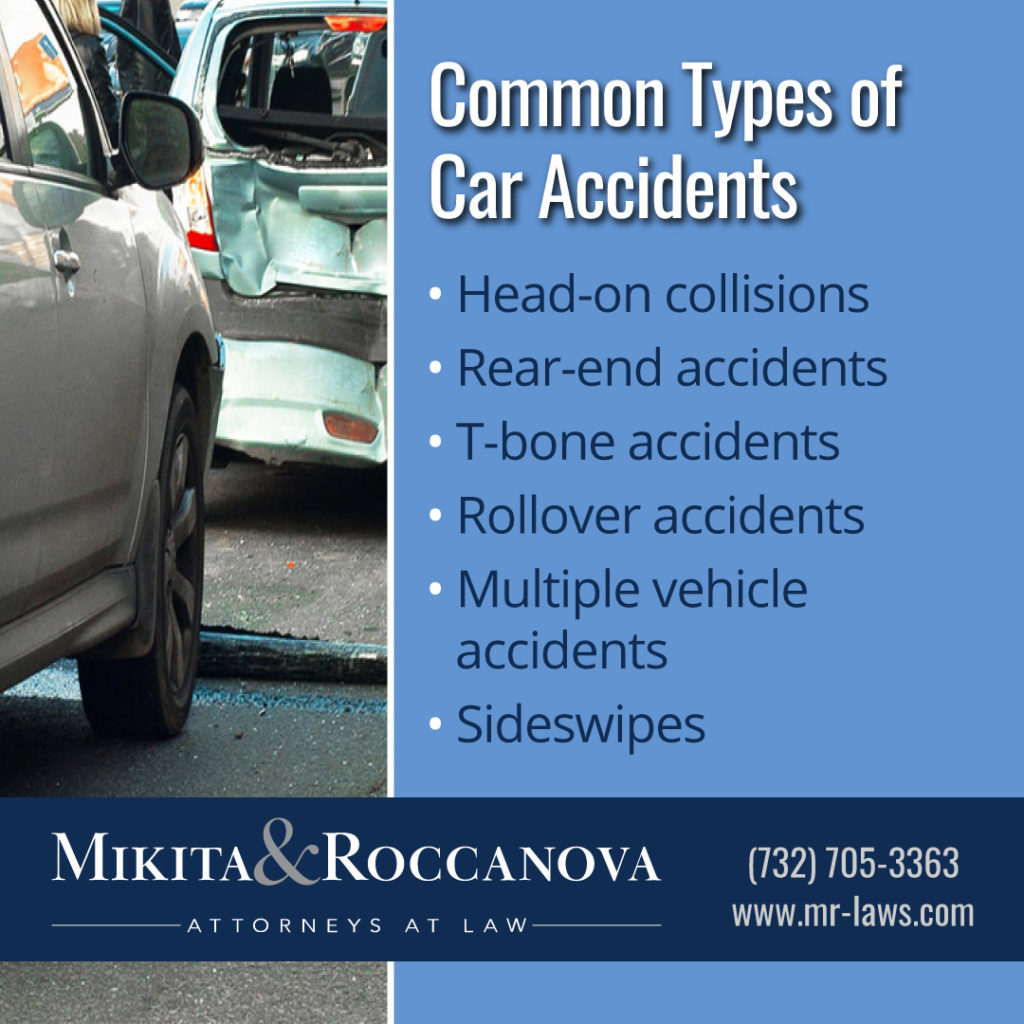What are the Common Types of Car Accidents?
Car accidents occur all too often throughout New Jersey. As the most-congested state in America, New Jersey presents more challenges than most others. Drivers in North Jersey experience even more issues than the average American driver because they are dealing with traffic from New York City, travelers coming up the East Coast, and large trucks bringing shipments from the ports around New York.
Learning about different types of accidents makes it easier for drivers to avoid injuries or fatalities. Moreover, drivers in North Jersey face speeding motorists, road rage, and recklessness that is difficult to predict. Drivers should also create a much safer environment inside their vehicles and help their teens learn to drive safely.
Drivers should look out for the situations that might cause a car accident. Motorists should do everything they can to avoid these accidents, preventing injuries and property damage, but there are times when there is nothing they can do. If drivers cannot avoid accidents, they should reach out to a Hazlet car accident lawyer for assistance.
Is a Rear-End Accident Compensable?
Rear-end accidents are compensable provided one driver is at fault for the crash. A rear-end crash might occur at extremely low speeds in a parking lot or neighborhood. Although these accidents may result in little to no property damage, they can cause injuries. Small children can easily be jostled in their car seats and suffer whiplash or other soft-tissue injuries.
Adults involved in low-speed accidents can suffer from whiplash without understanding the seriousness of the situation. Whiplash symptoms include arm, neck, and shoulder pain. Victims might feel dizzy, nauseous, or lose their balance. Some victims even experience symptoms of vertigo, and the pain can stretch down their back. Other symptoms include muscle spasms, nerve tenderness, and headaches.
To avoid rear-end accidents, drivers should focus on the road ahead of them, slow down, and always use their headlights. In areas with low visibility, drivers should use their high beams to increase visibility when possible. Motorists should avoid distractions as much as possible and do not ignore traffic just because it is slowing down. Drivers often believe they are stopping at an acceptable rate given traffic conditions, but other vehicles can stop quickly and leave a distracted driver no time to correct.
High-speed accidents of this nature are even more devastating because one vehicle is generally stopped during the crash. Drivers should keep their eyes on their rearview mirrors so that they can see who is coming and how fast. There are times when drivers can get out of the way before an accident occurs.
Another troubling type of rear-end accident involves parked vehicles sitting along the side of the road. Drivers must look out for parked or stopped vehicles because those vehicles are especially vulnerable. Sometimes, drivers or passengers are exiting these vehicles, and that is why it is important to stay away from the shoulder.
On the highway, stranded motorists might get out of their vehicles to change tires or secure their cargo. These motorists are already vulnerable because they are not in the car, and they are in even more danger when a distracted, intoxicated, or confused driver strikes them or hits their car and subsequently injures them.
Who is Responsible for My Head-On Collision?
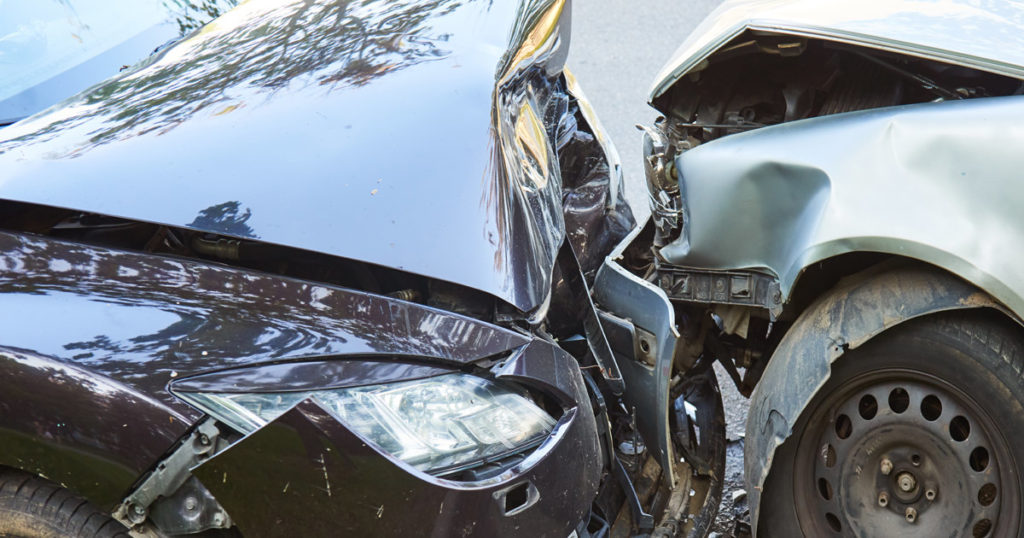
Head-on collisions are the responsibility of the driver who loses control of their vehicle or does not know where they are going. These drivers might lose their way in bad weather, or they might be intoxicated, distracted, or otherwise operating their vehicles unsafely. Because head-on collisions cause severe injuries or even deaths, drivers should try to avoid these crashes as much as possible. If it is impossible to see or unclear which way is correct, the driver should pull over to check a map or wait for the weather conditions to improve.
Head-on collisions might occur because drivers experience unexpected defects or malfunctions of their vehicles. A blown-out tire, faulty brakes, or unintended acceleration can force drivers over the centerline or onto a one-way street.
Wrong-way driving is connected to head-on collisions because drivers might enter the highway going the wrong direction or drive the wrong way down a one-way street. On normal streets, there are times when cars park on both sides of the road. Drivers must be willing to share the road with one another, and the driver who acts recklessly can be held liable for injuries and property damage. The same is true when drivers reach small tunnels or bridges that accept only one vehicle at a time. A head-on collision can occur because motorists are not paying careful attention to posted signs and the flow of traffic.
Anxious or angry drivers might choose to pass the car in front of them, knowing that traffic could be coming the other way. When these drivers do not have enough power to pass, they might crash head on into someone else. Even if the road is marked for and allows passing, it may not always be the safe decision.
What can I Do to Prevent T-Bone Accidents?
Preventing T-bone accidents is the responsibility of every driver on the road. These accidents are common because they result from drivers making quick decisions without checking for oncoming traffic. Someone who is pulling into traffic might not see cars coming the other way. Oncoming traffic will T-bone that vehicle, causing severe injuries or even deaths.
T-bone accidents can occur as cars inch forward when leaving parking lots. While these drivers cannot see, they are putting themselves in danger as they take up space in the roadway. Moreover, motorists must be aware of who is coming when they make left turns in large intersections. Confusion in intersections leads to severe crashes as drivers do not understand who should stop and who may proceed.
Drivers must obey all posted road signs, but it can be difficult to see these signs if drivers are not focused on the road. Speeding drivers simply cannot see everything on the road, and they may not realize that they are approaching an intersection or that they are required to stop.
Low-speed T-bone accidents are also possible as drivers pass through parking lots or neighborhoods. When someone backs out of their driveway, they might push another vehicle across the road. Although the impact occurs at low speeds, the driver could be injured because their door is compressed until the accident is over. Accidents such as this could involve several vehicles as the victim is pushed into another car, across several parking spaces, or even into pedestrians.
Can I Sue After Being Sideswiped?
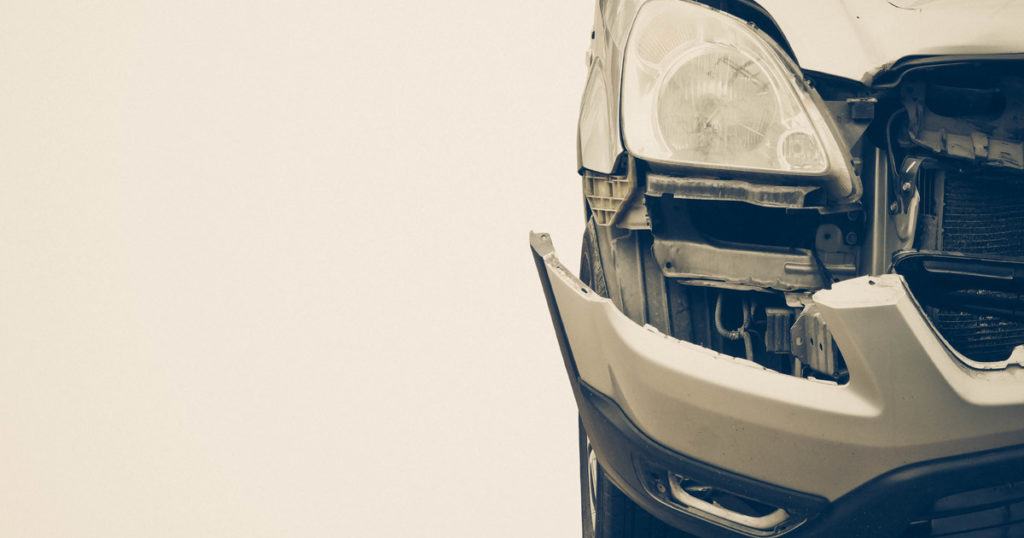
Sideswipes range from minor to severe depending on the situation. When two cars touch while changing lanes, the damage will likely be minor. Both drivers should pull over to the side of the road and exchange insurance information while they wait for a police officer to arrive. There is no need to say anything revealing to the other driver, and it is not wise to apologize for the accident. Most people will assume someone who is apologizing is admitting guilt.
If the accident is more severe, it might force a driver off the road or crush their vehicle against a barrier. Sideswipes are also a popular method that aggressive drivers use to intimidate or harm other motorists. Drivers should slow down to allow fast-moving traffic to pass, especially when it is clear another driver is lingering a little too close.
Drivers can avoid sideswipes by checking their blind spots and understanding where they are in relation to other vehicles. Motorists generally understand if someone in front of them can see them. It is best to avoid large trucks because their blind spots are so large that it is easy for them to change lanes without seeing a passenger vehicle. It is also wise to never linger next to large trucks, as they can shift without warning, and unsuspecting drivers could be clipped by the underside of the trailer.
This issue also persists with unskilled drivers in box trucks or moving vans. One of the most popular cost-cutting measures Americans can take is renting a moving van, but these vans are often so large that they offer little to no visibility on either side. A driver who does not possess a commercial license but is still allowed to drive this massive vehicle may not see other vehicles when making turns or changing lanes.
What Causes Rollover Crashes?
Rollover crashes are not an oddity that drivers avoid simply through happenstance. Rollovers have definitive causes that motorists must do everything they can to avoid. First, a rollover occurs because the vehicle has been tripped in some way. All the driver needs to do is hit the curb, a crack in the road, or a pothole. Anything that can get one of the wheels off the ground can cause a rollover. Common locations that can trip vehicles include uneven pavement, road construction sites where lanes shift, and wintry roads that were recently cleared of snow and ice. Blocks of ice stay behind, and they are so hard that they can easily trip even a large vehicle.
Second, drivers must slow down while completing their daily routes. Drivers on familiar roads know how to get where they need to go without paying much attention. As drivers give in to distractions, they may speed up because they know the route so well. According to the National Highway Traffic Safety Administration (NHTSA), 90 percent of victims killed in single-vehicle crashes died while engaging in a routine activity. Moreover, 85 percent of these accidents are single-vehicle accidents. Rarely does another car force a vehicle to roll over.
Additionally, 40 percent of rollovers involve speeding and about half involve some type of intoxication. Drivers must familiarize themselves with the risk factors that lead to rollovers and be especially careful while driving large vehicles such as cargo trucks, trailers, SUVs, or pickup trucks.
High winds and poor weather can cause rollovers without any warning. Heavy winds can easily cause a tall vehicle to tip over, or gusts can push cars across the road. Someone who is driving normally often cannot correct when the wind pushes their car across the road, and they could turn sideways after correcting. As the car turns sideways, it could trip on the pavement and roll.
How Do Single-Vehicle Accidents Occur?
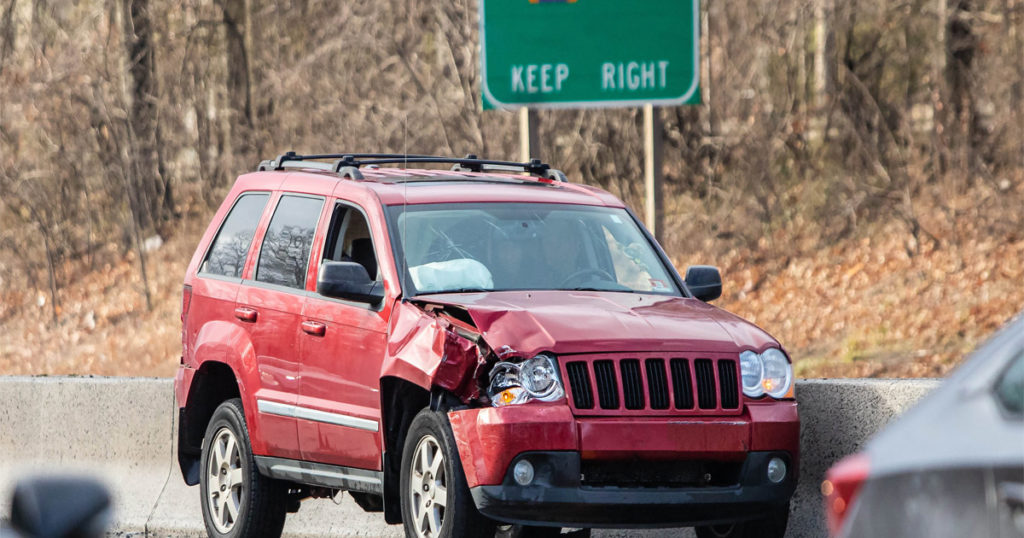
In New Jersey in 2018, 55 percent of all fatal accidents were single-vehicle crashes. Road conditions play a role in these accidents, as New Jersey does not rank highly in pavement condition or overall road maintenance. The Reason Foundation found that New Jersey ranked last in overall road condition, last in urbanized area congestion, and 36th in interstate pavement condition.
Single-vehicle accidents, then, are not always the drivers fault. Although some single-vehicle accidents are tragic errors or simple mistakes, a single vehicle can crash because of someone else’s negligence. A company, government entity, or construction crew can also cause single-vehicle accidents. Construction crews may leave debris, tools, or standing water that causes a crash. If government agencies do not design or maintenance roads properly or add the correct signage, drivers could easily crash. Another company may be responsible because it left debris in the road, created an obstacle, or otherwise caused the victim to crash.
Single-vehicle accidents also occur from contact. Cutting through traffic or making erratic maneuvers might force a single-vehicle crash. Drivers who have missed their turn, must make an exit, or realize they are choosing the wrong side of a forked road must move ahead, get off at the next exit, or turn on the next street to prevent accidents.
Who is to Blame for a Multi-Vehicle Accident?
A multi-vehicle accident can be confusing and traumatic for everyone involved. During a multi-vehicle accident, several vehicles can crash into each other at the same time, leading to severe injuries and property damage. The motorist who is responsible for the accident must be uncovered during an investigation because it is often unclear at the scene of the accident who is to blame.
Multi-vehicle accidents might include a chain reaction of several vehicles rear-ending one another. If the accident skids across the road, it could involve several more vehicles that are all struck in different ways. In extreme circumstances, a large truck could skid across the road or jackknife and allow the trailer to strike every vehicle ahead of it.
Simpler multiple-vehicle accidents occur when one driver rear-ends another at a stop light or sign. The victim might slide forward and rear-end a third vehicle. The motorist in the rear of the crash is responsible because they failed to stop, and they can be sued by the other two motorists for their injuries or property damage. For additional questions about liability or insurance claims, victims should consult with a car accident lawyer or even ask the lawyer to submit the claim.
What Should I Do After a Hit and Run Accident?
A hit and run accident can be a frightening and jarring experience. A hit and run incident might involve an assailant who pushes the driver off the road or forces them into an accident while that driver leaves the scene. In these cases, the victim may not see the at-fault motorist.
Other hit and run accidents include a meeting of the two drivers, but the at-fault driver might leave the scene when they realize they are liable for the accident, intoxicated, or otherwise responsible. It is important to collect as much information about the driver as possible, try to take their picture, and remember their license plate number. In situations such as this, motorists should try to avoid aggressive drivers and seek out witnesses who might have information about the accident.
Can I Recover Compensation for My Injuries?
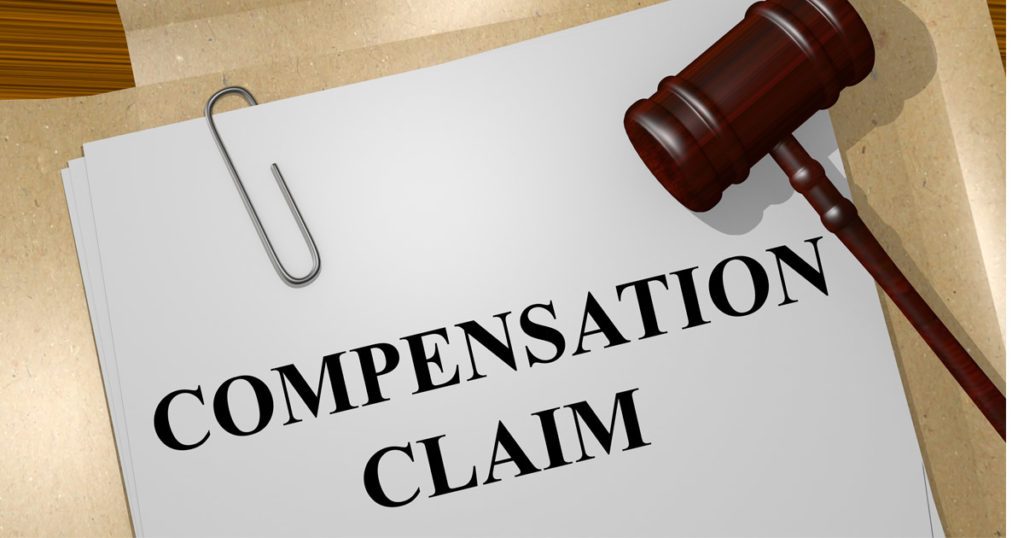
Compensation for the victims injuries and/or losses covers a broad scope, considering the victims entire life is turned upside-down by a car accident. Victims must remember that their compensation touches every part of their life, and several forms of compensation do not deal with economic losses. A lawyer should be consulted to determine the best course of action.
Medical bills. Medical bills require receipts, but they also cover any medical care that is required in the future. Victims need to share medical records, receipts, and treatment plans with the lawyer prior to filing suit. A medical expert may be called to testify that the victim requires follow-up surgeries, procedures, medications, or therapy to achieve a full recovery.
In other cases, recovery care may be difficult to determine because the victim requires medical equipment or the surgeries they need may not work. The victim might also require funds to help them travel to distant locations, as those are the only places where they can receive the appropriate treatment. If the victim is a child, their doctor may recommend medical treatment that stretches well into their adulthood because many issues cannot be fixed until they are fully grown.
Lost earnings. A victims lost earnings start accumulating that day or the next day when they cannot show up to work. Although a victim may have a few sick days they can use, they might miss weeks or even months of work. The financial strain this places on the victim causes emotional strain and anxiety. Creditors will inquire about payment, and the victim cannot do anything about their financial situation until they recover compensation.
The victim may find that they cannot go back to work, or they have been let go. If the victim cannot obtain gainful employment or is not capable of making as much money as they once did, they may file suit to recover all the earnings they are missing. Tax records, paystubs, and employer statements help substantiate these claims.
Emotional distress. Car accident victims suffer emotional distress from the moment the accident occurs until they achieve full recovery. Emotional distress pays for anxiety, depression, nightmares, sleeplessness, post-traumatic stress disorder (PTSD), and other mental conditions that may arise. A victim in this condition requires mental health counseling that may last for the rest of their life.
Pain and suffering. Pain and suffering covers all the discomfort the victim experiences after their accident. Someone who cannot sleep, concentrate, or focus may petition compensation for pain and suffering.
Punitive damages. Punitive damages in New Jersey pay for the reckless, wanton, or malicious conduct of the defendant. These damages may rise to $350,000 or five times the compensatory damages, whichever is greater. Lawyers must present convincing evidence so that a judge or jury will award additional damages aside from what is listed in the lawsuit.
Wrongful death. A wrongful death lawsuit is a legal avenue that families may take to recover damages after losing a loved one. They may seek compensation for medical costs, loss of companionship, burial expenses, and associated legal fees. The administrator of the estate or another beneficiary must file the lawsuit with the lawyers assistance. Ultimately, the award is dispersed among the beneficiaries of the estate according to New Jersey intestacy laws.
Do I Need to Hire a Lawyer?
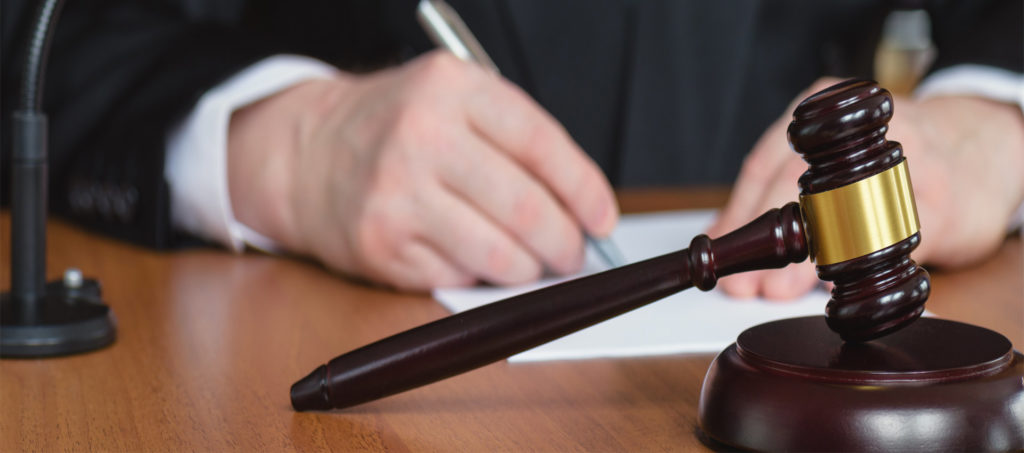
Hiring a lawyer is the simplest way for victims to recover compensation and seek justice after a car accident. After an accident, victims should reach out to a lawyer as soon as possible to begin the legal process. Retaining a lawyer helps victims collect as much information as possible about their accidents. These accidents involve several layers of liability, and it may take time to gather enough information to file a lawsuit.
Once the lawsuit is filed, lawyers will seek to settle the case and keep it out of court. Settlement negotiations occur at the behest of both the plaintiffs lawyer and the defendants lawyer. They will discuss the facts of the case and look for a settlement amount that is fair to the plaintiff. If the plaintiff cannot get a settlement that seems fair to them, they may choose to go to trial.
At trial, lawyers reveal all the evidence they collected. Trials may end in an unfavorable judgment, and the lawyer can appeal the decision. Retaining a lawyer also gives victims someone to assist them as they are bombarded with letters, phone calls, and emails from responsible parties. Victims should send everything to the lawyer for review, not reveal anything to the insurance company or another lawyer and focus on a full recovery.
Hazlet Car Accident Lawyers at Mikita & Roccanova Help Victims Recover from Their Injuries
If you or a loved one was hurt in a car accident, reach out to the Hazlet car accident lawyers at Mikita & Roccanova for assistance filing suit. We help victims by determining liable parties and ensuring victims receive the compensation they deserve. Call us at 732-705-3363 or contact us online for a free consultation. Located in Hazlet and Highland Park, New Jersey, we serve accident victims throughout Ocean County, Sussex County, and Pennsylvania.


